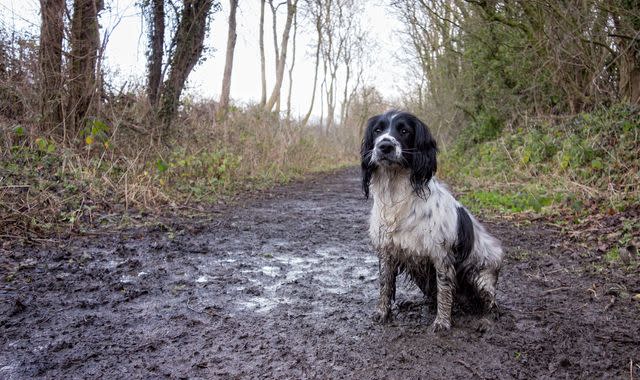Alabama rot: What dog owners need to know about the potentially deadly disease

Dog owners are being warned to look out for the symptoms of Alabama rot after a number of confirmed cases of the potentially life-threatening canine disease.
There have been 318 confirmed cases in the UK since 2012 - with 10 already recorded in 2024, according to Anderson Moores Veterinary Specialists.
The Winchester vets have been investigating the illness and tracking it in the UK.
What are the symptoms of the illness - and how can dog owners protect their animals? Here is what you need to know.
What is Alabama rot?
Alabama rot is also known as CRGV (cutaneous and renal glomerular vasculopathy).
It was first reported in America in the 1980s, and at first was only thought to affect greyhounds.
It is now understood to affect all breeds, ages and sizes of dog.
It causes damage to the blood vessels in the skin and sometimes the kidneys.
What are the symptoms of Alabama rot?
Dogs with Alabama rot tend to have skin ulcers on their legs or paws, according to the Royal Veterinary College (RVC).
Ulcers may also develop on the head, muzzle, tongue, flank and belly.
The ulcers vary in severity and could just look like a cut, bruise or sting, the RVC says.
However they stress that most skin ulcers will not be caused by Alabama rot.
Some dogs develop kidney failure. This typically happens within one to nine days of first noticing the skin ulcers, the RVC says.
Signs of kidney failure include lethargy, loss of appetite, nausea, vomiting, increased thirst or decreased urination.
What causes Alabama rot?
The cause of Alabama rot is not known.
The disease is more common in the winter and spring and in dogs who walk in muddy, woodland areas.
There have been reports of multiple dogs from the same household being affected by the disease, according to the RCV.
How can you protect your dog?
The RSPCA recommends washing off all mud following a wet and muddy walk, particularly if you have gone through woodland.
What is the treatment for Alabama rot?
Because the underlying cause of Alabama rot is still unknown there is no specific treatment, according to the RCV.
The vet will treat the skin lesions and if Alabama rot is suspected, may monitor kidney function.
Dogs experiencing kidney failure may require specialist treatment, including plasma exchange and dialysis.
Read more from Sky News:
Two dogs that savaged grandmother to death were XL bullys
Chernobyl's mutant wolves 'may have developed resistance to cancer'
What should you do if you think your dog has Alabama rot?
If you think your dog is showing symptoms of Alabama rot, contact your vet immediately.
If it is Alabama rot, early diagnosis and treatment is important.
How worried should dog owners be?
The RSPCA urges owners not to panic.
"The number of cases reported in the UK is extremely low, so there's little reason to be worried," they said.
"Thousands of dogs are walked in the countryside every day, and it's important to remember that only a very small number of dogs have been affected.
"The threat is very low, and while there may be an environmental trigger, we can't confirm that some areas are safer than others."
The RVC echoes this, stressing that "this is still a very rare condition" compared to other problems seen in dogs.


